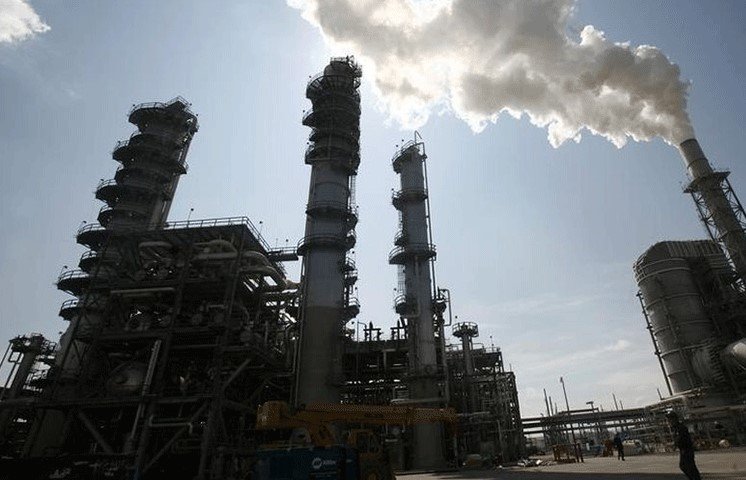Oil’s latest meltdown isn’t just a commodity story — it’s a geopolitical saga. But for import-hungry India, this price crash couldn’t have come at a better time.
It’s been a wild ride for the global oil market. A brewing trade war between Washington and Beijing, coupled with a curveball from Riyadh, has thrown crude prices off a cliff. Brent dipping below $60 a barrel? That’s no small thing. For India, though, this sudden slide is a much-needed breather in an otherwise inflation-rattled economy.
Price Dip Meets Policy Whiplash
The numbers say it all. Brent crude, the world’s oil benchmark, briefly slumped below $60 per barrel earlier this week — its lowest point in over four years. West Texas Intermediate, the U.S. equivalent, dropped even lower.
Two things got us here. First, fears of a global recession are rising thanks to the US-China tariff spiral. Second, Saudi Arabia — instead of tightening the tap — did the exact opposite.
Yes, Riyadh and a few oil allies upped production and then sweetened the deal for Asian buyers with a price cut for May deliveries. Market watchers were stunned. Oil was already under pressure. This just cranked it up.
That’s like throwing cold water on a market already showing fever symptoms.

OPEC’s Unexpected Playbook
This wasn’t the usual Saudi play. When prices dip, producers usually try to trim output. Not this time.
Saudi Arabia’s recent moves seem focused more on securing market share than shoring up prices. In a sense, it’s a defensive offense — pump more, price lower, dominate Asia.
And the OPEC+ group, once a careful balancer of supply and demand, is looking a bit fractured.
-
Goldman Sachs, never one to blink early, slashed its Brent forecast for 2026 not once, but twice in a week
-
Their latest call? $58 a barrel
-
Brent had hovered between $70 and $90 for almost 30 months straight
Not anymore. Now it’s a buyer’s market.
India’s Import Bill Just Got Lighter
For India, this is like an unexpected Diwali gift.
The country imports more than 85% of its crude needs. That dependence makes it vulnerable to oil shocks. But this time, it’s working in reverse. The lower the price, the happier the math.
As per government estimates, India’s crude oil import bill for April 2024 to February 2025 stood at around $220 billion. That’s massive — oil accounted for over a third of all goods India brought in during that time.
Now, even a small price drop can shave billions off that number.
One official from the Petroleum Planning and Analysis Cell (PPAC) put it plainly last month: “Every $1 fall in oil price trims our annual import bill by nearly $2 billion.”
More Than Just Cheaper Fuel
The domino effect here is powerful. Cheaper crude doesn’t just mean lower petrol and diesel prices at the pump. It shapes the entire economy.
Here’s how:
| Factor | Impact of Lower Oil Prices |
|---|---|
| Trade Deficit | Narrows, reducing pressure on current account |
| Forex Reserves | Strengthens, thanks to reduced outflows |
| Rupee Exchange Rate | Gets support as oil import costs dip |
| Inflation | Eases due to cheaper transport, logistics, and commodities |
| Subsidy Burden | Lightens, especially on LPG and kerosene |
One economist from a Mumbai-based investment firm summed it up: “Oil is India’s inflation wild card. When prices fall, the entire macro picture gets brighter.”
But It’s Not All Rosy
Because while oil relief helps India on one hand, the broader backdrop remains shaky. The trade war that’s pushing prices down is also rattling global growth. For India’s exports, that’s bad news.
There’s also the risk that ultra-cheap oil could stall India’s energy transition goals. Renewable investments tend to slow when fossil fuels get cheaper.
And let’s not forget — low oil won’t last forever.
One short paragraph, one big truth.
What’s Saudi Arabia Thinking?
Some believe the Saudis are preparing for long-term competition from US shale and even Iranian oil, should sanctions lift. Others think it’s a power flex — asserting dominance in Asia, particularly as Chinese demand shows signs of wobbling.
But there’s another theory doing the rounds.
A New Delhi-based oil trader, speaking on condition of anonymity, pointed out: “This could be part politics, part economics. Lower prices hurt rivals. And if OPEC+ breaks ranks, the Saudis still stay on top.”
India Can’t Afford to Be Complacent
Right now, things look good. But oil prices are notoriously fickle. All it takes is one geopolitical shock — say, a pipeline attack or unexpected sanctions lift — and the whole pricing structure could swing the other way.
Also, as the 2024-25 financial year draws to a close, the rupee remains sensitive to US Fed signals, capital flows, and, yes, oil.
Which means, the Centre can breathe — but not too easy.
A senior official at the Finance Ministry said it best: “Low oil gives us headroom. But we can’t base policy on hope that it stays this way.”
